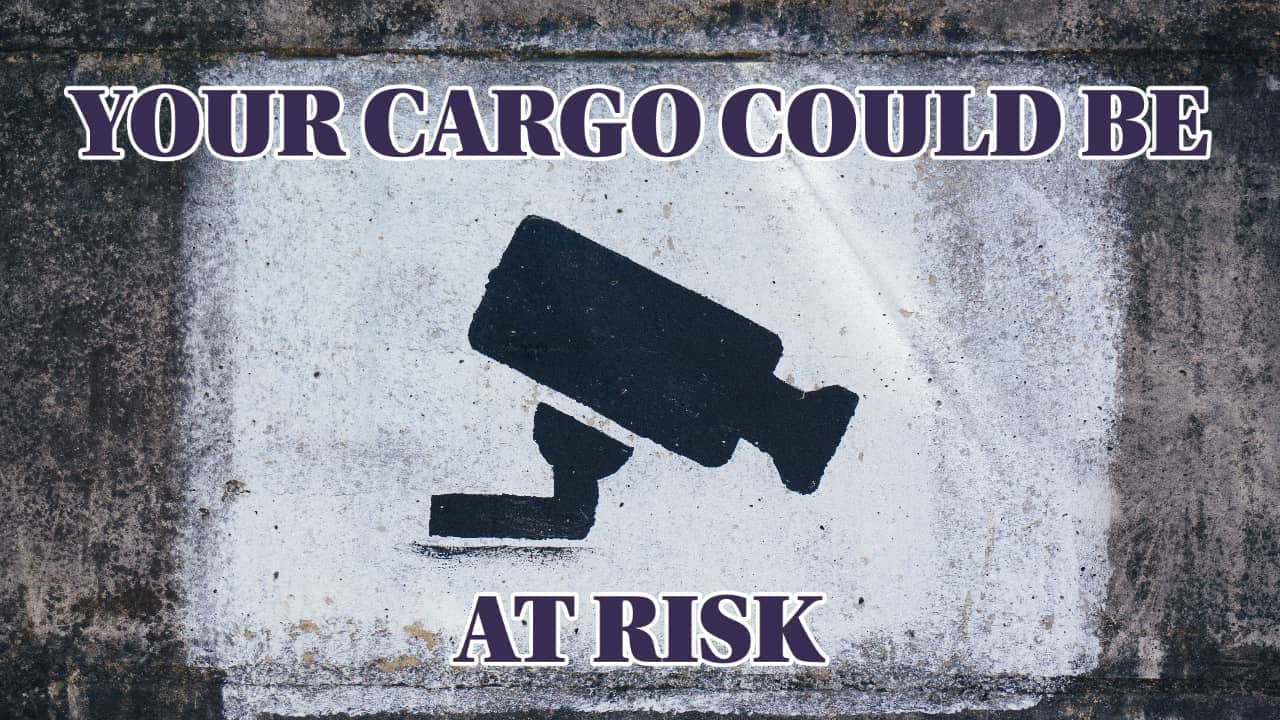
Risks to Cargo Security Due to Longer Idle Times and Congestion
5-minute read
Global cargo theft trends have shifted from the risk of in-transit, vehicle-based attacks to losses while cargo is at rest, with storage locations now critical at-risk areas.
Widespread congestion at ports and inland facilities led to increased opportunities for thieves during the period.
“Constant vigilance is required in order to combat the growing risk divergence in theft trends,” said Mike Yarwood, managing director, Loss Prevention at TT Club.
“Criminals are quick to adapt to prevailing conditions and have swiftly responded to the increased opportunities that supply chain congestion presents through the amount of cargo laying idle.
“The transport industry’s growing reliance on technology and a rapidly changing market for sourcing materials and components have opened new avenues for criminals to exploit companies’ increased vulnerabilities.”
Throughout 2021, global supply chains continued to face significant security, continuity, and resiliency threats due to the COVID-19 pandemic.
Although its impact seems to lessen in the early stages of 2022, it caused disruptions and major delays throughout 2021 and still has massive residual impacts globally.
Many of the concerns monitored throughout 2021 set the tone for continued risk to supply chain security in 2022.
Still, simultaneously new challenges and risks are likely to play a large role, such as the ongoing conflict in Ukraine, which is disrupting many industries in the short-term, and could have a variety of long-term effects.
The products most frequently involved in global cargo thefts overall last year included food and beverage (14%), agricultural produce (12%), construction materials (9%) and electronics (10%).
Significantly, many of the materials used to produce the latter two, such as nitrogen, iron ore, lumber, steel, and semiconductors, have all experienced sharp price increases since the outbreak of the global pandemic due to shortages with a consequent increase in the value of the manufactured products.
The annual report on theft trends compiled by international transport and logistics insurer TT Club and global provider of supply chain intelligence, BSI, is based on recent incident data for 2021.
The report highlights the cargo security threats that plagued supply chains in 2021 and offers advice on how operators can protect their cargo from theft risks.

It considers some of the emerging risks anticipated in the upcoming months and years based on the key themes that stood out in 2021:
- A strong increase in idle times due to significant port congestion throughout the year led to an increase in cargo targeted at rest
While actual global cargo theft incident numbers are down from 2020, in 2021, there was a significant increase in criminals targeting cargo at rest as delays indirectly made cargo more vulnerable to tampering by thieves and smugglers.
These cargo crime trends are juxtaposed with record-breaking cargo transiting through ports, driving record-breaking port congestion and idle times.
- The emerging risks of insider theft
Insider theft participation typically occurs when either warehouse or facility employees disclose confidential information pertaining to shipping and delivery times or when employees intentionally leave doors and gates unlocked or ajar overnight, granting criminals easier access to carry out thefts.
Another common tactic used during insider theft involves criminals bribing or coercing truck drivers to divert from their assigned delivery routes.
During these route diversions, the truck operator will stop at facilities or designated locations along the road, where criminals will unload partial loads of goods from the vehicle before the driver returns to their original delivery route.
- The vulnerabilities that come with increased use of digital means by suppliers
Criminals have adopted new tactics to target the changing environment for freight transportation.
The growing reliance on technology and a rapidly changing market for sourcing materials and components have increased reliability and effectiveness but also opened up new avenues of opportunity for criminals to take advantage of companies’ increased vulnerabilities.
Some new tactics identified in the past year include the increased targeting of freight transportation service exchange apps and websites. These freight service applications involve companies posting listings for truck drivers to respond to help move goods.
By utilizing these applications that require significantly less vetting than other methods, criminals are more easily able to present themselves as legitimate carriers.
Throughout 2021, transporters in Europe began reporting a rise in fictitious pickups and fraudulent carriers, highlighting the expansion of this risk worldwide.
- Consequences of an urgent need to change the locations of suppliers
In recent years, many organizations have made drastic changes to their supply chain.
Global events, such as the COVID-19 pandemic and truck driver shortages, have led organizations to utilize new workflow processes, in addition to new routes and transportation methods that differ strongly from what they had been doing routinely for years prior.
In many cases, organizations have not successfully completed proper due diligence before making these adjustments to secure their modified supply chains.
In addition, staff shortages in a variety of industries have increased simultaneously, meaning many employees who are responsible for securing or transporting goods are operating without sufficient training, or suppliers are dependent on temporary staff members.

COVID-19 had an immense impact on organizations, requiring new business plans and workflow processes. These disruptions, in many cases, forced organizations to reassess the global distribution of their supply chains and where business partners and suppliers are located.
As a result, organizations are increasingly looking to shift supply chains to a more diversified model to mitigate potential risks and disruptions or potential non-compliance with new regulatory frameworks.
As these considerations are made, it is important to conduct risk assessments for new sourcing locations to prepare for the different threats to the supply chain.
Tony Pelli, BSI’s Practice director for Security and Resilience, has produced a checklist of precautionary action points.
“To mitigate risk, there are a range of safeguards, including careful verification of trucking companies and other sub-contractors; insisting on the provision of details such as driver’s name, trailer number and appointed pick-up times and background screening of employees.”
“Vigilance is paramount, and we hope our reporting and advice will help supply chain partners to maintain and increase their diligent efforts to combat crime.”
To mitigate this risk, companies can take several actions, such as:
- Work to verify the trucking company – call the phone number they have listed, visit the website, and check to make sure the number they are using is not for a company that recently went out of business
- Where possible, set up pre-alerts – i.e. ask for the driver’s name, trailer number, and license plate number in advance and have appointment times for each pickup
- Check driver IDs and record information about drivers – check to make sure their ID is not expired and matches the actual driver
- Train people in the dispatch/shipping office to recognize suspicious behaviour – if the driver looks suspicious, shows up far too early, is wearing sunglasses/hoodie/etc. inside, something is probably wrong
- Make sure all carriers undertake employee background screening, including criminal history checks where possible
- Install cameras near dispatch/shipping/receiving windows to capture images of the driver’s face for later ID if something goes wrong
- Take pictures/copies of IDs if that’s allowed
Thorsten Neumann, president & CEO of Transported Asset Protection Association (TAPA) EMEA, commented:
“What we are seeing in EMEA is a heightened level of risk to virtually all types of goods moving in supply chains.
“Sadly, too many companies wait to seek solutions until they become a victim of a cargo crime, but by then, they will have suffered a significant financial and reputational loss.
“The way forward is to recognise the risks which exist and to learn about the industry standards, training and intelligence solutions which are available today and which are already key to the supply chain resilience of leading manufacturers and freight transport and logistic providers.
“All is not lost, but it is a time for action to manage these risks and prevent rising product losses.”
Source: The New Zealand Shipping Gazette and 2021 Cargo Theft Report by TT Club, TAPA EMEA and BSI Connect
P.S. Easy Freight Ltd helps New Zealand importers & exporters to save money on international freight and reduce mistakes by guiding how to comply with Customs and biosecurity rules.
➔ Contact us now to learn how we can assist you.
